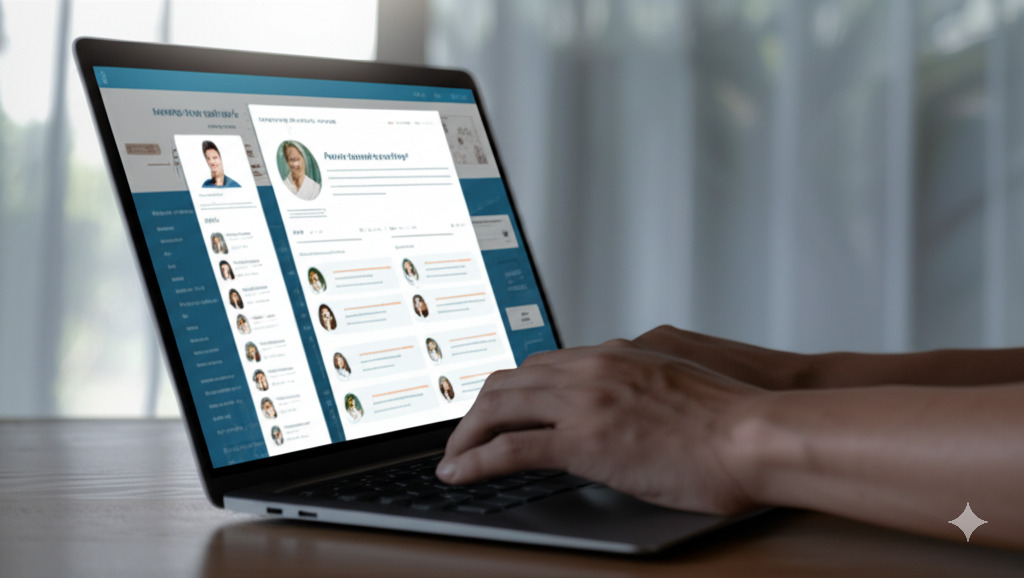How to Build a Strong Employer Brand on LinkedIn

In today’s hyper-competitive talent market, attracting and retaining top performers is more challenging than ever. Candidates are discerning, armed with information, and seeking more than just a paycheck. They want to work for companies with strong values, positive cultures, and compelling missions. This is where employer branding comes in – it’s the art and science of shaping the perception of your company as an employer among potential hires, current employees, and the wider professional community.
And when it comes to professional perception, no platform holds more sway than LinkedIn. With over a billion members globally, LinkedIn has evolved far beyond a simple digital resume repository. It’s a dynamic ecosystem for professional networking, industry insights, learning, and, critically, talent acquisition and employer branding. Neglecting your LinkedIn presence is akin to ignoring the single largest gathering of potential hires and brand advocates on the planet.
Building a strong employer brand on LinkedIn isn’t just about posting job openings; it’s a strategic, ongoing effort to showcase your company’s unique identity, culture, values, and the employee experience. It requires authenticity, consistency, and a deep understanding of what makes your organization a desirable place to work. This comprehensive guide will walk you through the essential steps to construct a powerful and attractive employer brand on LinkedIn.
Section 1: Laying the Foundation – Defining Your Employer Value Proposition (EVP)
Before you even think about crafting your first LinkedIn post, you need clarity on what message you want to convey. This starts with defining your Employer Value Proposition (EVP). Your EVP is the unique set of benefits and rewards employees receive in return for their skills, capabilities, and experience at your company. It’s the promise you make to your employees and the core of your employer brand.
What Comprises an EVP?
An EVP typically encompasses several key areas:
- Compensation: Salary, bonuses, stock options.
- Benefits: Healthcare, retirement plans, paid time off, wellness programs, parental leave.
- Career: Development opportunities, training, career progression paths, challenging work, recognition.
- Work Environment: Company culture, leadership style, work-life balance, flexibility, team collaboration, physical workspace (or remote setup).
- Culture: Mission, vision, values, commitment to diversity, equity, and inclusion (DEI), corporate social responsibility (CSR).
Why is it Crucial?
Your EVP differentiates you from competitors vying for the same talent. It provides the substance behind your branding messages. Without a clear, authentic EVP, your LinkedIn efforts will lack focus and impact, potentially coming across as generic or even disingenuous.
How to Define Your EVP:
- Internal Research: Survey current employees. What do they value most about working there? Why did they join? Why do they stay? Conduct focus groups or interviews. Analyze exit interview data.
- External Research: Understand what competitors are offering. What are the expectations of your target talent pool (e.g., software engineers, marketing managers)? Analyze industry trends.
- Leadership Input: Align the EVP with the company’s overall business strategy, mission, and long-term goals.
- Synthesize and Articulate: Distill your findings into a clear, concise, and compelling statement that captures the essence of your employee experience. It should be authentic, relevant, and differentiating.
Your defined EVP becomes the strategic filter for all your employer branding content on LinkedIn. Every post, article, and interaction should, in some way, reflect or reinforce this core promise.
Section 2: Optimizing Your LinkedIn Company Page – The Digital Storefront
Your LinkedIn Company Page is the cornerstone of your employer brand presence. Think of it as your digital storefront for talent. A neglected or incomplete page signals disinterest and unprofessionalism. An optimized page, however, serves as a vibrant hub for information, engagement, and talent attraction.
Key Optimization Elements:
- Profile Picture & Cover Photo:
- Logo: Use a high-resolution, easily recognizable company logo.
- Cover Photo: This is prime real estate! Use a compelling, high-quality image or graphic that visually represents your brand, culture, or EVP. Avoid generic stock photos. Showcase your employees (with permission), your workspace, or imagery related to your mission. Update it periodically to keep it fresh (e.g., for specific campaigns, milestones, or seasons).
- “About Us” Section:
- Overview: This is your elevator pitch. Clearly articulate who you are, what you do, and why you exist (your mission). Crucially, weave in key elements of your EVP. Why should someone want to work for you? Use relevant keywords that potential candidates might search for. Keep it engaging and concise, but informative.
- Specialties: List your core areas of expertise or industry focus. This helps with searchability.
- Essential Information: Ensure all fields are complete and accurate: website URL, industry, company size, headquarters location, founding year.
- Call-to-Action (CTA) Buttons: LinkedIn allows custom CTA buttons (e.g., “Visit website,” “Learn more,” “Contact us”). Choose the one most relevant to driving traffic to your careers page or main website.
- Location Details: Add specific office locations if applicable. This helps target local talent.
- Verification: If eligible, get your Company Page verified with the blue checkmark to enhance credibility.
Consistency and Updates:
Regularly review and update your Company Page information. Ensure branding (logo, colors, messaging) is consistent with your main website and other marketing materials. A complete, up-to-date, and visually appealing page builds trust and encourages exploration.
Section 3: The Content Strategy – Bringing Your Brand to Life
An optimized Company Page is necessary, but insufficient. You need to consistently publish engaging content that breathes life into your employer brand and EVP. Content is how you tell your story, showcase your culture, and connect with your audience on a human level.
Why Content is King:
- Visibility: Regular posting keeps your brand visible in followers’ feeds.
- Engagement: Compelling content encourages likes, comments, shares, and discussions.
- Storytelling: It allows you to narrate what it’s really like to work at your company.
- Value: Providing valuable insights positions you as a thought leader and a desirable employer.
Types of Employer Branding Content:
- Company News & Milestones: Share successes, product launches, expansion news, anniversaries. Frame them in terms of team effort and impact.
- Industry Insights & Thought Leadership: Post articles, analyses, or commentary on trends relevant to your industry. This showcases expertise and attracts professionals interested in your field. Share content from your company leaders.
- Behind-the-Scenes Glimpses: Offer authentic looks into daily life at the company. Team lunches, collaborative sessions, office events (virtual or in-person), workspace tours. Keep it genuine, not overly polished.
- Employee Spotlights & Testimonials: Feature employees from diverse roles and backgrounds. Let them share their experiences, career journeys, and what they love about working there. Video testimonials are particularly powerful.
- Job Postings (Beyond the Listing): Don’t just auto-post jobs. Create custom posts for key roles, highlighting the team, the impact of the role, and unique benefits. Link to the formal application but add context and personality.
- Values in Action: Showcase how your company lives its values. Highlight DEI initiatives, sustainability efforts, community involvement, or volunteer days. Provide concrete examples.
- Learning & Development: Talk about training programs, mentorship opportunities, and how you invest in employee growth.
- Interactive Content: Use LinkedIn Polls to ask relevant questions, host Q&A sessions with leaders or recruiters (using LinkedIn Live or Events), and pose questions in your posts to spark conversation.
Content Best Practices:
- Visuals are Crucial: Posts with images or videos receive significantly higher engagement. Use high-quality, authentic photos and videos. Create branded templates for consistency. Use infographics to share data (e.g., diversity statistics, employee growth).
- Consistency is Key: Aim for a regular posting schedule (e.g., 3-5 times per week). Use scheduling tools if needed, but maintain flexibility for timely news. Develop a content calendar aligned with your EVP themes and company events.
- Authentic Tone of Voice: Define a brand voice that reflects your company culture – is it formal, informal, witty, technical? Be consistent and human. Avoid corporate jargon.
- Use Hashtags Strategically: Include a mix of broad industry hashtags (#TechJobs, #Marketing), niche hashtags (#SoftwareEngineering, #DigitalMarketing), branded hashtags (#YourCompanyLife), and campaign-specific hashtags. Research relevant and trending tags.
- Tag Relevant People/Companies: When appropriate (e.g., employee spotlights, partnerships), tag individuals or other company pages to increase reach.
Section 4: Leveraging LinkedIn’s Features for Employer Branding
Beyond the Company Page and regular posts, LinkedIn offers specific features designed to enhance employer branding:
- LinkedIn Life Tab: This is a dedicated section on your Company Page specifically designed to showcase culture and the employee experience. It requires a subscription to LinkedIn Career Pages. If you have it, maximize its potential: The Life Tab offers a more immersive and curated view of your employer brand than the main feed alone.
- Overview: Customize the header and introductory text.
- Life: Post rich media content (photos, videos, articles) categorized under different themes (e.g., Culture, DEI, Innovation, Team). This is where employee stories and behind-the-scenes content shine.
- Jobs: Integrates with your job postings.
- People: Highlights employees based on location, function, or education, allowing candidates to see potential future colleagues.
- Insights: Provides data about your company’s workforce distribution and growth.
- LinkedIn Jobs: When posting jobs, ensure the descriptions are compelling, inclusive, and reflect your EVP. Utilize skills tagging effectively. Leverage the branding options within the job post itself. Respond promptly to applicants.
- LinkedIn Ads for Talent: Use targeted advertising to reach specific talent pools beyond your followers. Targeted ads amplify your message and ensure it reaches the right audience.
- Sponsored Content: Promote your best-performing organic posts or create dedicated ad content (images, videos, carousels) targeting users by industry, job function, skills, location, etc.
- Sponsored Messaging (InMail): Send personalized messages directly to the inboxes of potential candidates (use sparingly and thoughtfully).
- Dynamic Ads (Follower Ads, Spotlight Ads, Jobs Ads): Personalized ads that can feature the viewer’s profile photo or dynamically show relevant jobs.
- LinkedIn Groups: Identify and participate in relevant industry or skill-based groups. Share valuable insights (not just promotional content), answer questions, and engage in discussions. This positions your company (and participating employees) as knowledgeable and connected.
- LinkedIn Events: Host virtual career fairs, webinars on industry topics, “Ask Me Anything” sessions with leaders, or informational sessions about your company culture. Promote these events widely on your page and through targeted ads.
- LinkedIn Live: Use live video streaming for real-time engagement. Host Q&As, broadcast company events, or conduct live interviews.
Section 5: Employee Advocacy – Your Most Powerful Asset
Your employees are your most credible and influential brand ambassadors. Content shared by employees typically gets far greater reach and engagement than content shared directly by the company page. Empowering and encouraging your employees to share their authentic experiences is crucial.
How to Foster Employee Advocacy:
- Encourage, Don’t Force: Advocacy must be genuine. Create a culture where employees want to share positive experiences.
- Make it Easy: Provide employees with easily shareable content (e.g., blog posts, company news, photos from events). Use internal platforms or newsletters to highlight content worth sharing.
- Provide Guidelines: Offer simple guidelines on company voice, confidentiality, and best practices for professional social media use. Focus on empowerment, not strict rules.
- Recognize and Celebrate: Acknowledge and appreciate employees who actively advocate for the brand online. Feature their contributions internally.
- Lead by Example: Encourage senior leadership and managers to be active and authentic on LinkedIn, sharing company news and their own perspectives.
- Training: Offer optional training sessions on optimizing LinkedIn profiles and sharing content effectively (personal branding).
When employees share insights about projects they’re working on, team successes, or why they enjoy their work, it provides powerful social proof that resonates deeply with potential candidates.
Section 6: Engagement and Community Building
LinkedIn is a social network, not just a publishing platform. Building a strong employer brand requires active engagement and fostering a sense of community.
- Respond Promptly: Monitor comments on your posts and respond in a timely and helpful manner. Acknowledge positive feedback and address questions or concerns professionally.
- Engage with Employee Posts: Like, comment on, and share relevant posts from your employees (especially those related to work, culture, or industry insights). This validates their contributions and boosts visibility.
- Follow Relevant Hashtags & Influencers: Stay informed about industry conversations and engage where appropriate.
- Interact with Others: Comment thoughtfully on posts from industry partners, leaders, or even competitors (where appropriate and constructive).
- Ask Questions: Encourage dialogue by posing questions in your posts.
- Listen: Pay attention to the conversations happening around your brand and industry. What are candidates asking? What are employees saying? Use this feedback to inform your strategy.
Consistent, authentic engagement shows that there are real people behind the brand who care about connecting with their audience.
Section 7: Measuring Success and Iterating
Building an employer brand is an ongoing process that requires monitoring, analysis, and refinement. You need to understand what’s working and what isn’t.
Key Metrics to Track (via LinkedIn Analytics):
- Follower Growth: Are you attracting new followers interested in your company? Analyze follower demographics.
- Impressions: How many times has your content been seen?
- Engagement Rate: This is crucial. Track likes, comments, shares, and clicks as a percentage of impressions or followers. Identify which types of content resonate most.
- Click-Through Rate (CTR): How many people are clicking on links in your posts (e.g., to your careers page, blog)?
- Company Page Views/Unique Visitors: How many people are visiting your Company Page?
- Life Tab Views (if applicable): Track engagement with your culture content.
- Talent Brand Index (available with paid Talent Solutions): Measures your relative strength as an employer brand compared to peers.
- Applicant Quality/Source: Are you seeing an increase in qualified candidates citing LinkedIn as their source?
Qualitative Feedback:
- Monitor comments and messages for sentiment and recurring themes.
- Ask candidates how they perceived your brand during the interview process.
- Check employee feedback channels.
Using Insights for Iteration:
Regularly review your analytics. Double down on content formats and themes that drive high engagement. Experiment with different post types, visuals, and posting times. Adjust your strategy based on data, feedback, and evolving business goals. If certain aspects of your EVP aren’t landing, revisit your messaging or content approach.
Conclusion: The Long-Term Commitment
Building a strong employer brand on LinkedIn is not a short-term campaign; it’s a long-term strategic commitment. It requires a clear understanding of your unique value proposition, consistent effort in creating and sharing authentic content, active engagement with your community, and empowering your employees to be advocates.
By investing strategically in your LinkedIn presence, you move beyond simply listing jobs to actively shaping the narrative around your company as an employer of choice. You attract candidates who are not just qualified, but genuinely aligned with your culture and values. You foster pride among current employees and build a resilient, attractive brand that stands out in the competitive talent landscape. Authenticity, consistency, and a human touch are your greatest tools. Start building today, and cultivate the talent community your organization deserves.



